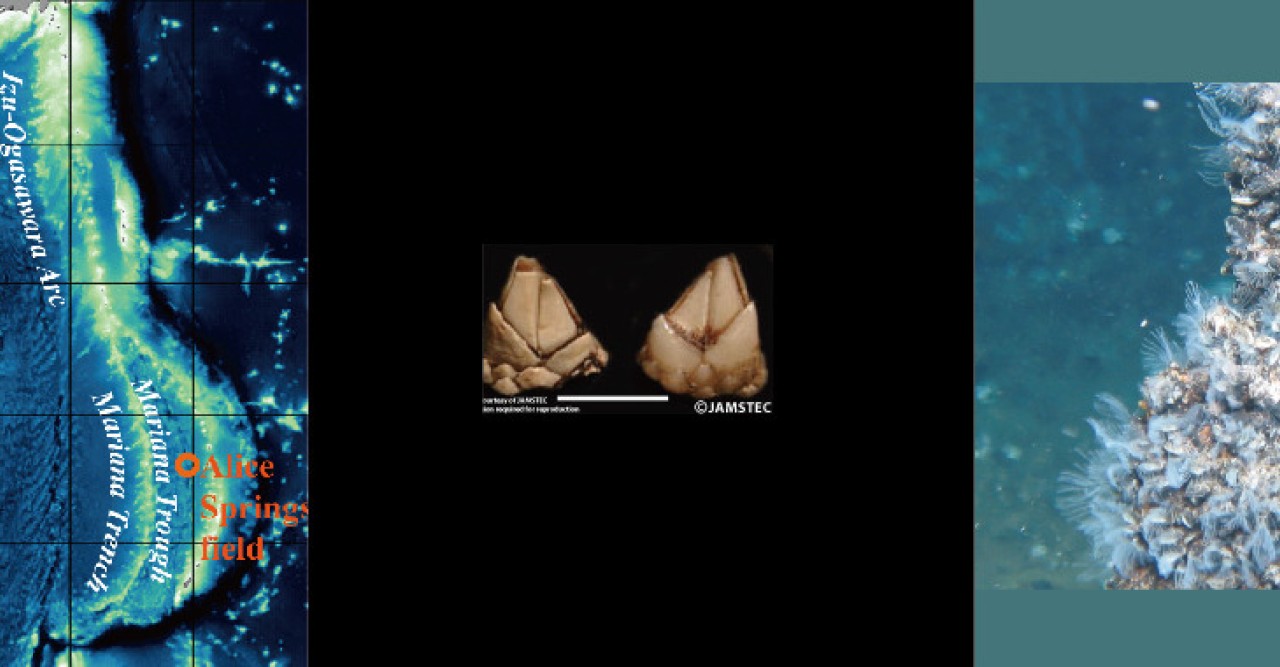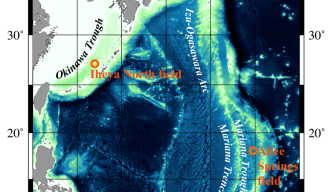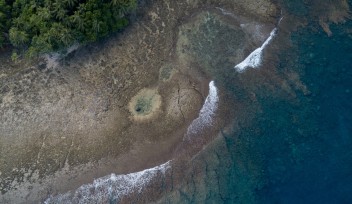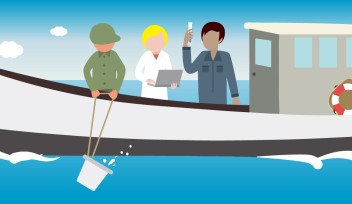Hydrothermal Settlers

The deep ocean seems so remote that it is difficult to imagine any sort of human-generated change making an impact on deep-sea life. It is even more difficult to collect or examine evidence from the deep ocean to determine what those impacts might be. Enter the barnacle; a hard, sessile creature that looks like a tiny volcano and attaches to rocks, boat bottoms, and other hard substrates, where it filters ocean water to feed on tiny organisms. The barnacle holds clues about how climate change is affecting the deep ocean. Okinawa Institute of Science and Technology Graduate University Marine Biophysics Unit researcher Yuichi Nakajima recently studied two kinds of deep-sea barnacle in a collaboration with the Marine Genomics Unit and the Japan Agency for Marine-Earth Science and Technology (JAMSTEC). He identified genetic data that suggest the diversity and differentiation of barnacle populations in two deep-sea troughs near Okinawa and the Mariana Islands, and his findings have been published in the International Journal of Molecular Sciences.
Barnacles make very convenient study subjects because they are portable, well-protected, and relatively easy subjects for DNA extraction and sequencing. For this experiment, Nakajima studied two species of deep-sea barnacle called Neoverruca sp.1 and Neoverruca brachylepadoformis. He received his samples from a JAMSTEC voyage that collected specimens using a remote operated vehicle about 1000 and 3600 meters below sea level in the Okinawa and Mariana troughs, respectively. Nakajima then extracted DNA from the barnacles and sequenced it with Marine Genomics Unit members, noting differences in the genetic code known as polymorphisms. Where one barnacle might have a repeat pattern in the long sequence of nucleic acids, another might have a different repeat pattern. He grouped the segments by polymorphism, and identified 12 distinct segments called microsatellites. Each of these segments with its unique code can be used as genetic markers, high-resolution sequences that allow researchers to examine nearly unnoticeable differences in genetic code that separate two species.
Identifying microsatellite markers is important because microsatellites show how genes are passed and inherited within a population. Analyzing this genetic data can show the genetic diversity of the population, which researchers can use to draw conclusions about the health of the population. “Genetic diversity is an index of extinction and of population size,” explained Nakajima. “Higher genetic diversity means a healthy population, but decreasing genetic diversity means that the population kinship increases.” Kinship refers to mating systems and interactions within a population; behaviors that spread genes from one individual to another. The increase in kinship means that individuals in smaller populations share a larger proportion of their genes than in larger populations, lowering the population’s genetic diversity. “Genetic diversity is necessary for population maintenance,” said Nakajima.
In addition, microsatellites can also show whether other populations are migrating to the area by showing the origin of new genes introduced to the population. This would help explain the genetic connectivity, or shared genes, between barnacle species in the two troughs, separated by more than a thousand kilometers of ocean where these barnacles cannot survive. Or at least, the barnacles cannot survive there as settled adults. In their young, larval phase, the barnacles float on the ocean current and can migrate to other troughs, introducing their genes to other populations. Knowing barnacle migration patterns will reveal the movement of the currents in the northwestern Pacific.
In addition to showing how currents move and species are connected, understanding the genetic diversity of a species or population allows researchers to predict that species’ risk of extinction. “We are worried that deep ocean species will go extinct,” said Nakajima. Using the barnacle as a model organism, Nakajima can extrapolate how other species may be faring and how the deep-sea ecosystem is changing, thereby predicting the consequences before species go extinct.
“We know that the ocean’s surface will be affected by climate change,” said Nakajima, acknowledging that for a long time, researchers were not sure whether these effects would reach the deep ocean. In addition to altering ocean currents climate change seems to affect marine snow, a phenomenon where clusters of organic material aggregate in the ocean to look like fluffy snowflakes, then fall to the ocean floor. Marine snow provides food for deep ocean scavengers, but many marine scientists, including Nakajima, are worried that climate change will alter the amount of marine snow that sinks through the ocean. “Recent studies reported that the deep sea will also be influenced by surface disturbances.” Nakajima’s barnacles offer a necessary window, through which he can examine how the greatest environmental crisis of our time will change one of the most mysterious parts of the world.
by Poncie Rutsch
Specialties
Research Unit
For press enquiries:
Press Inquiry Form

















